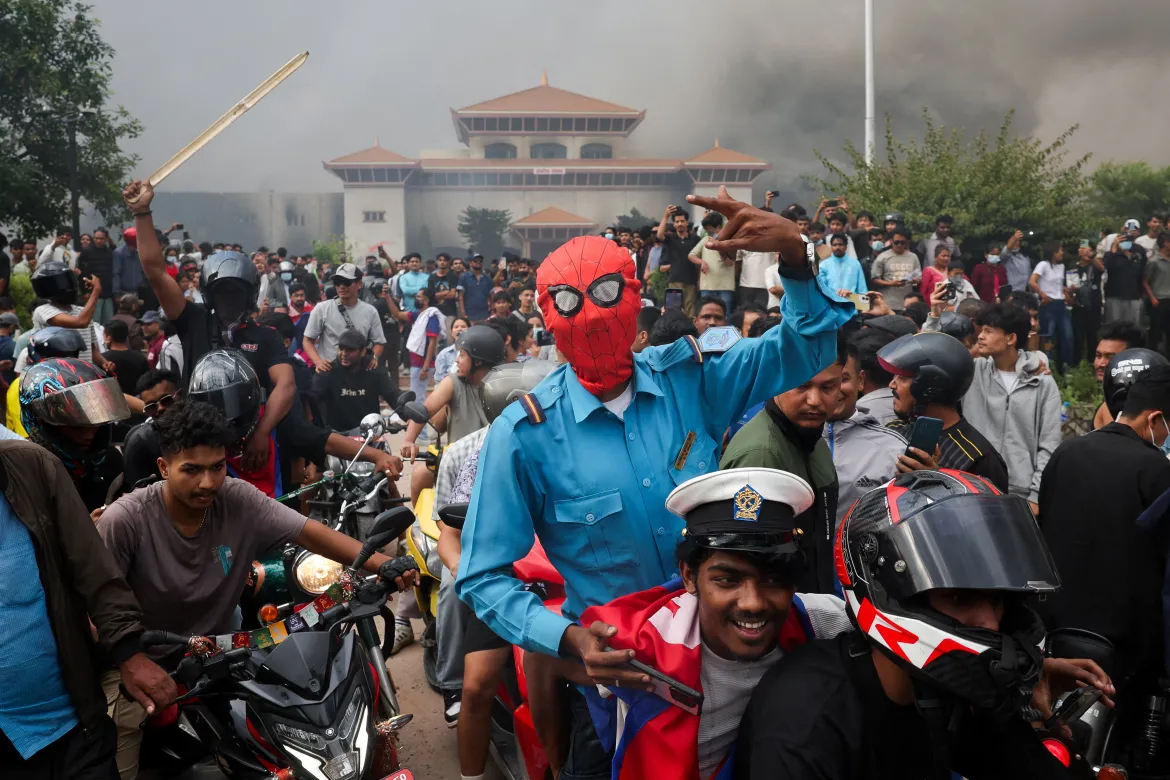
Nepal Gen Z Protests: Social Media Ban Sparks Deadly Unrest, PM Oli Resigns
Kathmandu, September 9, 2025 — Nepal is facing its most significant political crisis in over a decade after Gen Z-led protests erupted nationwide in response to a sweeping social media ban. The unrest, which has left at least 19 people dead and hundreds injured, culminated in the resignation of Prime Minister K.P. Sharma Oli, marking a turning point for the Himalayan nation.
1. The Social Media Ban: Catalyst for Anger
On September 4, 2025, the Nepalese government shocked the nation by banning 26 major social media platforms, including Facebook, Instagram, YouTube, WhatsApp, and X (formerly Twitter). Officials justified the move by citing national security and the need for platforms to register under new regulations. However, critics described it as a direct assault on freedom of expression and a calculated attempt to silence dissent.
The ban immediately affected millions of young people who rely on these platforms for communication, education, activism, and business. VPN use skyrocketed, and alternative apps surged in popularity. For many, the blackout was not just about connectivity but about government overreach and lack of transparency.
2. Youth-Led Protests Erupt Across Nepal
Within 48 hours, Nepal’s Gen Z activists mobilized protests in Kathmandu, Pokhara, Birgunj, and dozens of other cities. Young demonstrators carried placards denouncing censorship, chanting slogans for freedom, and demanding accountability for long-standing corruption and nepotism in government.
Many observers note that these protests were not spontaneous but built on years of frustration with rising unemployment, lack of economic opportunities, and widespread perception of a political elite disconnected from ordinary citizens.
3. From Peaceful Demonstrations to Deadly Clashes
On September 8, protests reached a boiling point when tens of thousands of people marched toward Parliament in Kathmandu. Security forces deployed tear gas, rubber bullets, and even live rounds in an attempt to disperse crowds. In response, protesters threw stones and tried to storm government buildings.
By nightfall, at least 19 protesters had been killed and hundreds injured, including police officers. International observers condemned the excessive use of force, while local activists accused the government of brutality against peaceful demonstrators.
4. Government Retreat: Ban Lifted, Curfews Declared
Amid growing unrest, authorities announced on September 9 that the social media ban would be lifted. Access to platforms was restored, but curfews were imposed in major cities to contain further violence. The government also promised financial compensation for the families of victims and free medical treatment for the injured.
A 15-day investigative committee was formed to examine the clashes, though many citizens doubt its independence or effectiveness.
5. Political Fallout: PM Oli Steps Down
The crisis reached its peak when Prime Minister K.P. Sharma Oli submitted his resignation to President Ram Chandra Poudel. Oli’s departure followed the earlier resignation of Home Minister Ramesh Lekhak, who admitted responsibility for mishandling the protests.
Oli’s resignation underscored the loss of public trust in the ruling coalition and highlighted the instability that has plagued Nepal’s democratic system since its transition from monarchy in 2008.
6. Widespread Violence and Attacks on Institutions
Even after the ban was lifted, unrest continued. Protesters set fire to sections of Parliament and attacked the homes of high-ranking leaders, including President Poudel. These incidents symbolized the depth of public frustration and the view that Nepal’s political establishment had lost legitimacy.
The violence also revealed how quickly public anger could move from digital rights to systemic corruption, nepotism, and inequality.
7. Why Gen Z is at the Forefront
Gen Z, Nepal’s most connected generation, is leading the movement because they feel most betrayed by a system that has failed to provide jobs, opportunities, or fairness. With youth unemployment rates high and widespread corruption allegations, their frustration has transformed into political activism.
For many young Nepalese, the protests are not just about internet access—they are about demanding accountability, transparency, and a chance for a better future.
8. International Reactions and Global Attention
Internationally, human rights organizations condemned the violence, urging Nepal to respect civil liberties. Neighboring powers India and China expressed concern but refrained from direct criticism, emphasizing stability instead. Western governments, meanwhile, called for dialogue and warned that Nepal’s democratic progress could be jeopardized if reforms are not enacted.
9. What Lies Ahead for Nepal
The immediate future remains uncertain. A caretaker government is expected to manage affairs until a new prime minister is appointed. Protest leaders have pledged to continue demonstrations until structural reforms addressing corruption and youth unemployment are enacted.
Analysts warn that unless Nepal’s leaders address these root causes, the protests could reignite, potentially with even greater intensity.
10. Conclusion: A Nation at a Crossroads
The events of September 2025 began with a social media blackout but escalated into a nationwide movement that forced the resignation of a prime minister. Nepal’s Gen Z movement has shaken the foundations of the country’s political system, showing that a generation once dismissed as apathetic is now leading the charge for democratic renewal.
Whether this moment leads to lasting reform or further instability will depend on how Nepal’s leaders respond to the demands for justice, equality, and accountability.